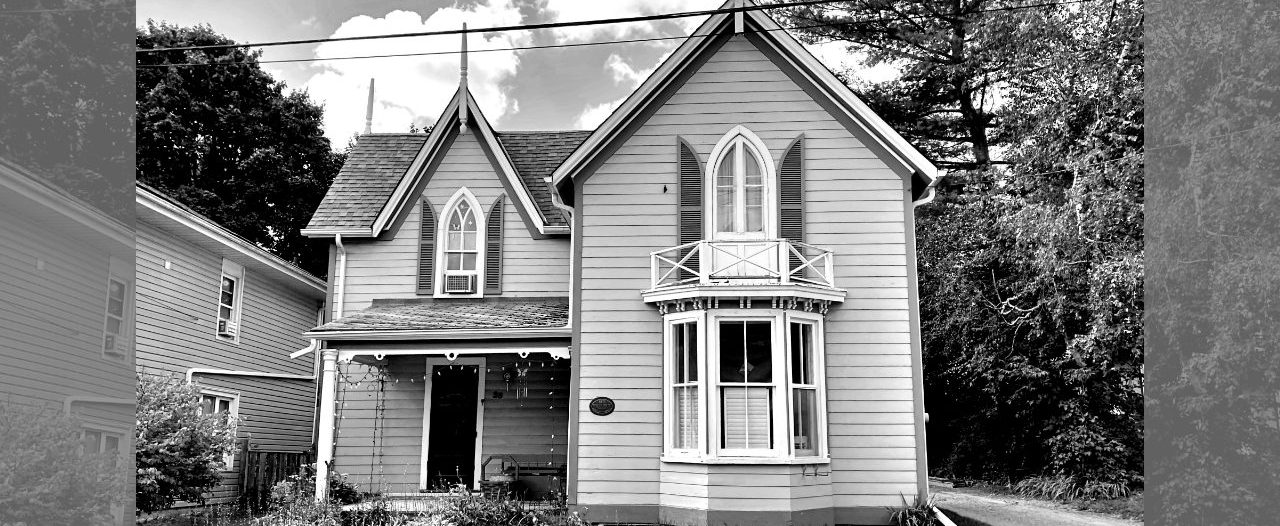Raham House
A Testament to Uxbridge’s Rich Heritage – 1871

Nestled in the heart of Uxbridge, Ontario, the Raham House at 32 Church Street stands as a remarkable emblem of the town’s architectural and historical legacy. Constructed in 1871, this 1½-storey frame residence showcases distinctive design elements, including prominent large and small gables, elegant Gothic-style windows, and a charming oriel window that graces its façade.
Architectural Significance
The Gothic Revival style, evident in the Raham House’s pointed arches and intricate woodwork, was a popular architectural trend in the mid to late 19th century. This design choice reflects a romanticism of medieval architecture, aiming to convey a sense of grandeur and tradition. The inclusion of both large and small gables adds depth and character to the structure, while the oriel window—a type of bay window that projects from the main wall—provides an ornamental touch and allows for additional interior light.
Joseph and Agnes Raham: Pillars of the Community
In 1896, the property was acquired by Joseph and Agnes Raham. Joseph Raham was a prominent figure in Uxbridge, known for operating a successful carriage factory. During this era, carriages were essential for transportation, and Raham’s enterprise would have been vital to the local economy, providing both employment and essential goods to the community. The proximity of the Raham House to the factory suggests a seamless integration of work and home life, a common practice in the 19th century.
Subsequent Stewardship: Jane Wilson’s Legacy
Following the Rahams, the property was sold to Jane Wilson, a trailblazer in Uxbridge’s civic landscape. Wilson served as a councillor in 1897 and 1898 and broke new ground as the town’s reeve in 1911 and 1912. Her leadership during a period when female political representation was rare highlights her dedication to public service and the progressive spirit of Uxbridge.
Preserving Heritage
Today, the Raham House stands as a testament to Uxbridge’s rich history. Preserving such structures is crucial, as they offer tangible connections to our past, allowing current and future generations to appreciate the architectural styles, craftsmanship, and stories that have shaped our communities. Efforts to maintain and protect heritage properties like the Raham House ensure that the legacy of individuals like Joseph and Agnes Raham, as well as Jane Wilson, continues to inspire and inform.
Conclusion
The Raham House at 32 Church Street is more than just a building; it is a symbol of Uxbridge’s enduring heritage. Its architectural features tell of a bygone era’s aesthetic preferences, while its former inhabitants reflect the industrious and pioneering spirit of the town’s forebearers. As we move forward, honoring and preserving such landmarks ensures that the rich tapestry of our history remains woven into the fabric of our present and future.
Source
Learn about other Uxbridge Historic Homes on our blog page.


 Facebook
Facebook
 X
X
 Pinterest
Pinterest
 Copy Link
Copy Link


